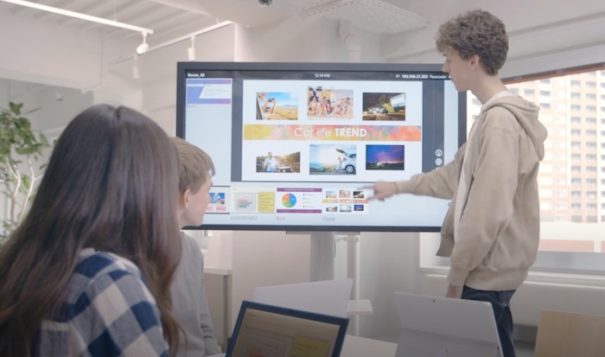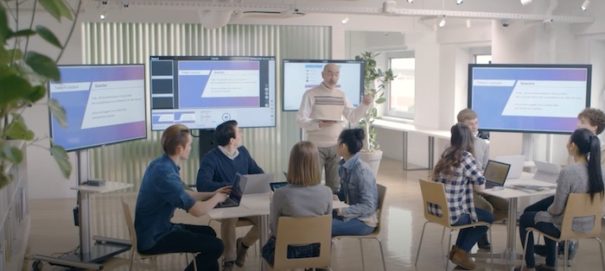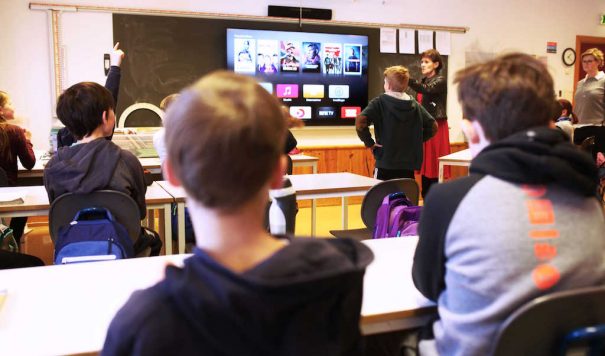Promoting collaborative learning with AI technology
Alex Parlour, Corporate & education solutions marcom manager Sony Solutions Europe, profundiza en las posibilidades de esta tecnología para mejorar los procesos de enseñanza y aprendizaje actuales.
Aunque la inteligencia artificial (AI) es un concepto que ahora está en boca de todos, no es algo novedoso. Desde mediados del siglo pasado se habla de esta tecnología. In fact, fue definida en 1956 en la Conferencia de Dartmouth (USA.), y en aquel momento se creyó que sería cuestión de diez años dotar a las máquinas de la capacidad de pensar por sí mismas.
El fracaso de esa previsión tan exageradamente optimista fue absoluto e hizo que las investigaciones se paralizaran durante años. However, poco a poco se retomaron y se fue avanzando en el desarrollo de esta tecnología hasta la actualidad.
Atrás quedan ya máquinas como Deep Blue, que fue capaz de derrotar al campeón de ajedrez ruso Gary Kasparov en 1997. Entonces, era una novedad, y ahora la IA está por todas partes. El desarrollo de la tecnología ha sido clave en este proceso y permite lograr lo que parecía imposible hace no tantos años.
La inteligencia artificial se emplea en los modernos asistentes de voz, en todo tipo de videojuegos, en la rama militar, en la financiera, en medicina… ¿Y en la educación? Sí, también en la educación tiene múltiples aplicaciones, aunque aquí se está desarrollando de forma más lenta que en otras áreas.
Y es que el uso de la IA puede ayudar a mejorar los procesos de enseñanza y aprendizaje actuales. Gracias a esta tecnología se reducirán las tareas repetitivas, como la corrección de exámenes tipo test y la evaluación de trabajos, ahora mucho más rápidas gracias a la IA.
También se va a fomentar la educación personalizada creando itinerarios de aprendizaje con contenidos adaptados a cada estudiante, junto con la retroalimentación que necesita. And, Third, la tecnología de IA va a dar más relevancia al aprendizaje colaborativo.
¿Y en qué consiste este aprendizaje colaborativo? Es un tipo de estudio totalmente distinto al individual y competitivo en el que se han formado generaciones y generaciones de alumnos a lo largo de la historia.
Como su nombre indica, prima la cooperación, la interacción. No se trata de competir con los demás para ser el mejor, sino de lograr los objetivos junto a los demás para salir todos beneficiados, tanto los que tienen un menor nivel como los que tienen uno superior.
En el mundo laboral, el trabajo en grupo es vital en muchas ocasiones. Las empresas necesitan que los distintos componentes del mismo aporten sus puntos de vista y que lleguen a una solución, la mejor, entre todos.
El trabajo colaborativo exige una mayor preparación de las tareas y que se involucren al 100% los miembros del grupo. For this reason, es necesario que en la vida educativa, sobre todo en la universitaria, se fomente este tipo de aprendizaje.
Implantación de tecnologías
Para fomentar el aprendizaje colaborativo a través de la IA es necesario implantar tecnologías de la información en las aulas. Today, todavía hay mucha reticencia en los centros educativos a trabajar con móviles o tabletas, incluso cuando existen dispositivos personales que garantizan un acceso limitado a herramientas y aplicaciones.
Es aquí donde los proveedores de soluciones para el sector educativo deben generar servicios que se adapten a las necesidades previamente mencionadas de manera eficiente e innovadora. I mean, soluciones de distinta naturaleza para escuelas, universidades y centros de enseñanza que conviertan la experiencia estudiantil en más gratificante e interactiva.
On the other hand, es imprescindible crear un entorno de trabajo inmersivo para que profesores, estudiantes y compañeros colaboren y aprendan juntos. Hoy en día es posible gracias al uso de diversos dispositivos, como tabletas, portátiles y smartphones.
In this sense, el sistema Vision Exchange de Sony ha aprovechado este aspecto y permite compartir información de forma inalámbrica con otros miembros del grupo y maestros. Se trata de un sistema de aprendizaje activo, adecuado para instituciones universitarias y centros de educación superior, así como para salas de conferencias corporativas.
Siguiendo esta idea, Sony ha desarrollado, alongside UbiCast, la solución Miris Netacapture para grabar lecciones online. En combinación con Visión Exchange, ofrece a las organizaciones una solución AV flexible que permite la realización de conferencias interactivas.
In the same way, las soluciones para la gestión de campus son extremadamente útiles. Las recepciones virtuales que permiten registrarse automáticamente y los sistemas descentralizados de gestión de salas, for example, son algunas de las apuestas de Sony Teos para el futuro en el sistema educativo.
Sin duda alguna, la IA seguirá creciendo en importancia en nuestras aulas, llegando a desarrollar un papel crucial en la educación en un futuro no tan lejano.
Alex Parlour
Corporate and Education Solutions Marcomm Manager en Sony Solutions Europe
You liked this article?
Subscribe to our Feed And you won't miss a thing.


















